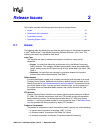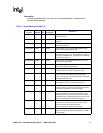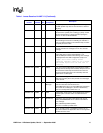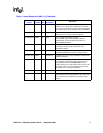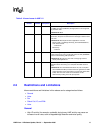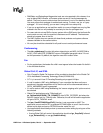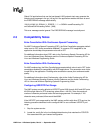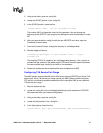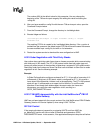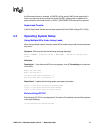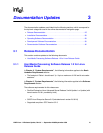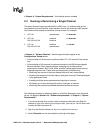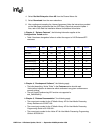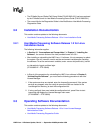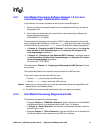
HMP Linux 1.2 Release Update, Rev 05 — September 2006 22
3. Using a text editor, open the .config file.
4. Locate the [IPVSC] section in the .config file.
5. In the [IPVSC] section, locate the line
setparm 0x4005, 49512 !set the rtpPortBase on IPVSC
The number 49512 is the default value for this parameter. You may change the
beginning of the UDP/RTP port range by first editing this value and saving the .config
file.
6. After you have saved the .config file with the new UDP/RTP port value, open the
Command Prompt window.
7. From the Command Prompt, change the directory to /usr/dialogic/data.
8. Execute fcdgen as follows:
/usr/dialogic/bin/fcdgen -f <input filename>.config -o <output
filename>.fcd
The resulting FCD file is created in the /usr/dialogic/data directory. If the -o option is
omitted from the command, the default output FCD file will have the same filename as
the user-modified input .config file, but with an .fcd extension.
9. Restart the system service to download the new configuration to HMP.
Configuring T.38 Service Port Range
The HMP system currently defaults to port 6000 as the starting UDP/RTP port for the T.38
service port. If the T.38 service port range used by the HMP system conflicts with other
RTP service, the following procedure describes how to configure HMP to use a different
T.38 service port range:
1. Stop the system service.
2. Locate the .config file in the /usr/dialogic/data directory that matches the FCD/PCD
files associated with your licensed configuration.
3. Using a text editor, open the .config file.
4. Locate the [0xe] section in the .config file.
5. In the [0xe] section, locate the line
setparm 0x4c21, 6000 ! QFC3_PrmIPRxPortBase (QFC3_PrmLocalUDPPortBase)



